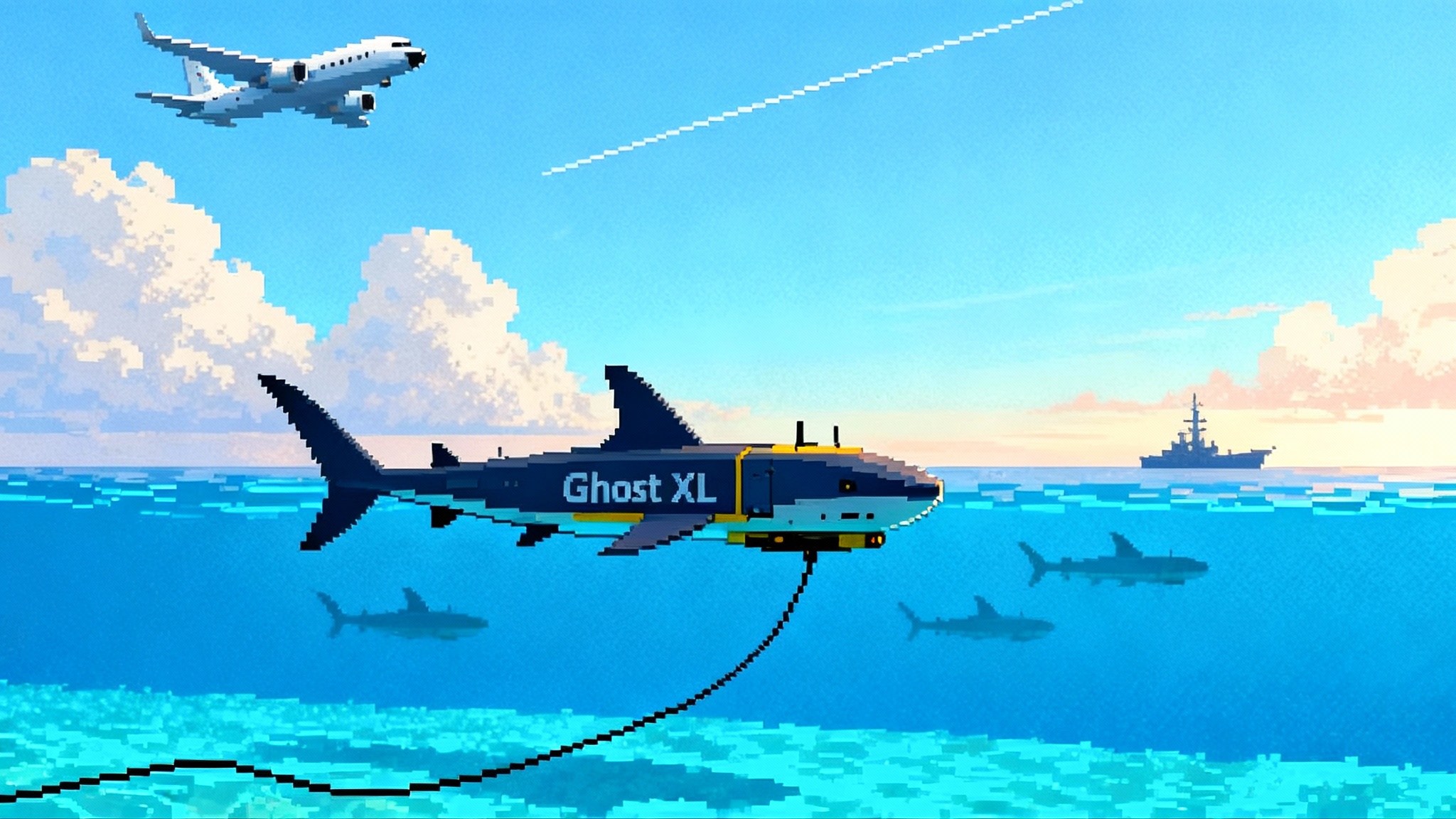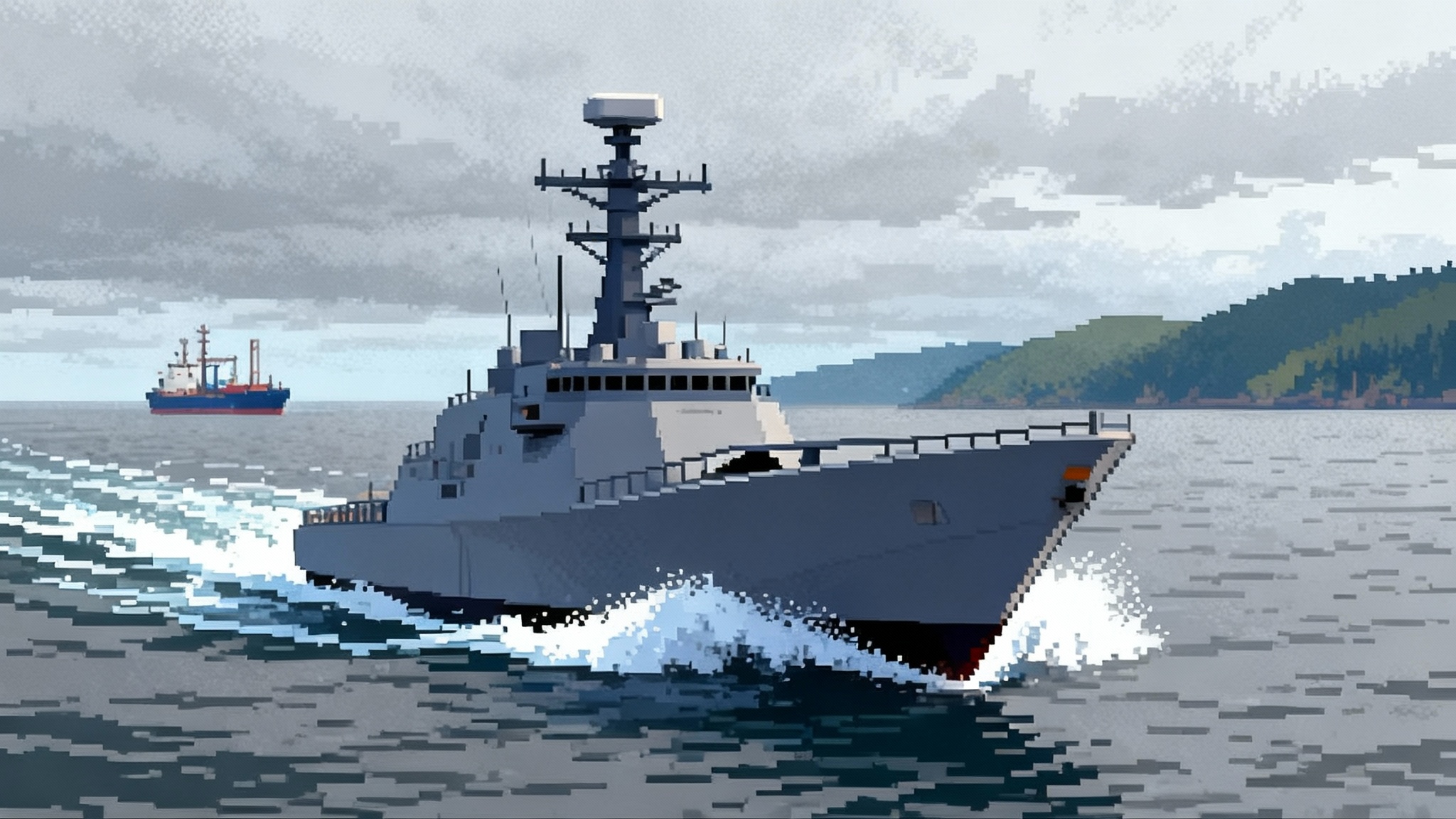SDA Tranche‑1 lifts off, starting monthly builds of PWSA
On September 10, 2025 the Space Development Agency launched 21 Transport Layer satellites, the first operational slice of PWSA. A monthly cadence now aims to turn demos into real regional capacity with Link‑16 from orbit and a growing optical mesh.

The inflection point for a proliferated military internet in space
On September 10, 2025, the Pentagon’s Space Development Agency put the first operational slice of its Transport Layer into orbit from Vandenberg, a 21‑satellite batch that starts a planned month‑by‑month rollout through mid‑2026. Space Systems Command and SDA called the flight a success in the official launch readout. The consequence is larger than one mission: a proliferated mesh in low Earth orbit is moving from slides and experiments to a tool warfighters can plan around.
Tranche‑0 proved the plumbing. Tranche‑1 is about operational tempo. With each launch the mesh thickens, optical paths multiply, and coverage boxes begin to overlap. The goal is routine, resilient delivery of tactical data, including Link‑16 from orbit, across services and theaters.
What Tranche‑1 actually delivers
Think of the Transport Layer as a resilient orbital data network that routes messages between shooters and sensors with very low latency. A fighter, a destroyer, an air defense battery, and a small drone can publish and subscribe without a single critical point on the ground.
Key features to watch as satellites come online:
- Optical crosslinks tie satellites into a space mesh so traffic can bypass contested ground routes. As more nodes arrive, routing options increase, which raises resiliency and lowers latency.
- Native tactical waveforms, including Link‑16 from orbit, bring airborne and ground users into the mesh with gear they already have. Early Tranche‑1 nodes will focus on regional coverage, then expand as the constellation fills out.
- IP‑based services ride on top, enabling flexible payload tasking, remote software updates, and multi‑level security tailored by theater and mission.
Operators do not need to know which satellite is overhead. They need to know their targeting update arrives on time, gets fused, and reaches the shooter that can act.
The plan, the players, and the cadence
SDA plans a total of 126 Transport Layer satellites and 28 Tracking Layer satellites across 10 missions, with the initial wave focused on Transport and the first missile warning and tracking spacecraft joining in early 2026. For a clear overview that matches SDA’s public framing of goals and timing, see this SDA goals and timeline.
The industrial lineup matters. York Space Systems and Lockheed Martin are building Transport spacecraft. L3Harris and Northrop Grumman are the Tracking primes. SpaceX is providing early launch services and is positioned to carry a significant share of the manifest. Diversity of primes is a feature in a proliferated architecture, but it raises the bar for interoperability and test discipline.
Near‑term milestones that will prove Tranche‑1 is real
The next nine months are about converting capability into availability:
- Crosslink interoperability across vendors. Early satellites will first link to same‑vendor neighbors, then expand to cross‑vendor links. Success lowers latency, increases path diversity, and reduces the impact of any single anomaly.
- Link‑16 from orbit with squadron‑level users. Tranche‑0 showed spaceborne broadcasts are possible. Tranche‑1 needs routine joins during live training so pilots and JTACs treat spaceborne Link‑16 as just another participant.
- Ground segment throughput and automation. Operations centers must scale TT&C, plan crosslink routes, push software, and manage keys without manual bottlenecks.
- Ops center maturation. Move from launch and checkout to real network operations with end‑to‑end latency, path health, and user experience metrics.
- Secure onboarding of new users. Key distribution, waveform configuration, and deconfliction with legacy line‑of‑sight should feel routine by spring.
- Tracking Layer pathfinders. As early Tracking spacecraft activate in 2026, watch for fused custody handoff into fire control networks through the Transport Layer.
Risks that could slow the mesh
- Optical terminal compatibility. Small timing or pointing differences can create finicky behavior at scale.
- Ground software maturity. A proliferated LEO network needs a robust scheduler and traffic manager. Expect bugs that emerge only under load and plan for rapid patching.
- Spectrum and interference. Link‑16 from orbit changes geometry and deconfliction. Busy ranges will need disciplined playbooks.
- Cyber hardening. Software supply chain risk and credential management remain evergreen threats. Continuous red teaming and fast remediation are essential.
- Launch cadence. A monthly tempo is ambitious. Weather, range congestion, and spacecraft issues can ripple the schedule, though the architecture still delivers incremental value when a batch slips.
Exercise‑by‑exercise: how Tranche‑1 shows up for operators
Commanders will not wait for the last satellite. Expect progressive integration in training as capacity builds:
- Month 1: Squadron ride‑alongs. Spaceborne Link‑16 supplements line‑of‑sight nets, smoothing situational awareness at long range.
- Month 2: Joint fires lab events. Army fire support teams pass targeting messages through the Transport Layer during controlled live‑fire reps; focus on completion rates and latency under jamming.
- Month 3: Maritime kill web reps. Destroyer groups move targeting updates between aircraft, surface radars, and ships masked by terrain or distance.
- Month 4: Dispersed operations rehearsal. Units operate from austere locations with minimal terrestrial network while the mesh carries tasking and mission data.
- Month 5: Cross‑theater rehearsal. Staffs run time‑compressed scenarios that require sensor sharing between theaters; the network must scale gracefully.
- Month 6: Integrated air and missile defense trial. Early Tracking feeds begin routing through Transport for custody handoff and fire control quality checks.
- Month 7: Multi‑domain targeting sprint. ISR aircraft, small unmanned systems, and ground teams push tracks into the mesh; automated correlation returns refined targets to the best shooter.
- Month 8: Coalition interoperability day. Partner units join with pre‑approved configurations and governance.
- Month 9: Stress test under electronic attack. The training cell pushes jamming and cyber pressure while operators run playbooks that assume intermittent ground losses.
What changes for shooters and sensors in the loop
- Pilots and JTACs: Spaceborne Link‑16 extends the envelope and smooths coverage holes created by terrain, supporting survivable dispersal tactics.
- Air defenders: Transport availability shortens the path for missile warning and sensor tasking; custody on dim, fast targets will improve as Tracking density rises.
- Maritime commanders: Space routing adds paths when line‑of‑sight is blocked or contested without adding antennas to the mast.
- ISR teams: More consistent backhaul from small unmanned systems lets units push processed products, not just raw data, reducing downstream bandwidth needs.
The Tracking Layer plug‑in and why early 2026 matters
As the first Tranche‑1 Tracking satellites join in early 2026, the architecture’s value for missile warning and tracking becomes more obvious. Tracking payloads detect and track dim and fast threats, ground processing fuses and validates tracks, and the Transport Layer moves fire control quality data to the unit that can act. When training begins to meet engagement timelines consistently, the architecture stops being a science project.
Metrics that matter
Decision makers should fix on a short list:
- End‑to‑end latency for a standard tactical message at different mesh densities and load levels.
- Message completion rate under jamming and ground link outages.
- Cross‑vendor optical link success rates over long dwell periods.
- Time to onboard a new unit, including keying and configuration.
- Default usage rate across sorties and events, not just special tests.
The bigger picture
PWSA is a bet on proliferation, automation, and competition among vendors inside common standards. Monthly launches shorten feedback loops and let the services learn fast. That same learning loop is reshaping other domains, from uncrewed air combat in uncrewed fighters push autonomy, to crewless surface warfare in crewless warship era, to long‑range fires posture along the First Island Chain in First Island Chain posture.
When the first Tranche‑1 Tracking spacecraft light up and the Transport roster approaches triple digits, the United States will have a more resilient, more flexible way to move time‑sensitive data in a fight. That is deterrence by design, and it started with a single September launch that was more than a test. It was the start of a drumbeat.








